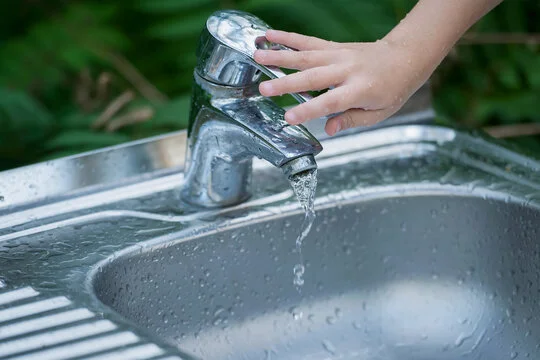3822 Blossom Terrace Erie pa How To Turn Off Water

3822 Blossom Terrace Erie pa How To Turn Off Water, Knowing how to turn off the water supply to your property is an essential skill, especially during emergencies like burst pipes or major leaks. For homeowners and residents of 3822 Blossom Terrace, Erie, PA, this guide provides comprehensive instructions on how to locate and turn off your water supply safely and efficiently.
424-441-9124
Introduction to Water Shut-Offs at 3822 Blossom Terrace
Why You Need to Know How to Shut Off Your Water
Understanding how to turn off the water supply at 3822 Blossom Terrace, Erie, PA, can save you from significant water damage and repair costs. This knowledge is especially crucial in preventing flooding and mitigating damage during sudden pipe bursts.
Common Situations Requiring Water Shut-Off
Some of the common reasons for needing to turn off your water supply include:
- Burst pipes during winter
- Renovations or repairs
- Leaking faucets or appliances
Locating Your Main Water Shut-Off Valve
Typical Places to Find the Main Water Shut-Off
In most homes, the main water shut-off valve is typically located in the basement, utility room, or along an exterior wall closest to where the water line enters the home. At 3822 Blossom Terrace, this valve is likely situated near the front-facing wall of the basement or in a utility closet.
Tips for Locating the Valve at 3822 Blossom Terrace
If you’re unsure where to look, consider:
- Checking near the water meter: Often, the shut-off valve is positioned close to the main water meter.
- Inspecting the perimeter of the basement or crawlspace: This is where the main water pipe often enters the house.
Types of Water Shut-Off Valves
Gate Valves vs. Ball Valves
There are two primary types of water shut-off valves:
- Gate valves: These have a wheel-like handle and are common in older homes. They require multiple turns to fully open or close.
- Ball valves: These are newer, featuring a lever that turns 90 degrees for a quick shut-off.
Identifying Which Type You Have
To identify your valve type, look for:
- A round handle for gate valves.
- A straight lever for ball valves.
How to Turn Off the Main Water Valve
Step-by-Step Instructions
- Locate the valve as discussed in previous sections.
- Turn the valve clockwise to shut it off. For gate valves, rotate the handle until it stops. For ball valves, turn the lever 90 degrees until it is perpendicular to the pipe.
- Check that the water is off by turning on a faucet. Water flow should stop completely.
Safety Tips to Consider When Turning Off the Valve
- Ensure you’re using protective gloves to avoid injury.
- Move slowly to prevent damaging older valves, which can be brittle.
Shutting Off Water Inside the House
Locating Secondary Valves
Secondary shut-off valves control water to specific parts of your home:
- Under sinks: Typically located in cabinets beneath the sinks.
- Toilets: Found on the wall near the toilet base.
Turning Off Water Under Sinks and Toilets
- Turn the valve clockwise for sinks and toilets to cut off water flow.
- Ensure the handle is securely tightened but not overly forced to prevent damage.
Turning Off Water for Outdoor Fixtures
Shutting Off Outdoor Faucets
Outdoor shut-off valves are often located inside the home, near where the outdoor faucet connects to the wall. Turn these clockwise to cut off water to the exterior fixtures.
How to Handle Sprinkler Systems
For properties like 3822 Blossom Terrace, sprinkler systems may have a dedicated shut-off located near the main water line or inside the garage. Refer to the system manual for specific instructions.
Preparing for Emergencies
Creating a Water Shut-Off Plan
Having a plan ensures that everyone in the household knows what to do during a water emergency:
- Map out the valve locations.
- Label the valves clearly for easy identification.
Training Household Members on Water Shut-Off Procedures
Teach everyone in your home how to:
- Locate and operate the main water shut-off valve.
- Understand secondary valves for specific areas.
What to Do If the Valve Won’t Turn
Handling Stuck Valves
A stuck valve can be caused by rust or sediment buildup. Solutions include:
- Applying penetrating oil to loosen the valve.
- Using a valve wrench for extra leverage.
Tools and Techniques for Loosening Valves
- Rubber mallets can gently tap the valve to break up sediment.
- Adjustable pliers provide additional grip if needed.
How to Turn the Water Back On
Proper Procedures to Prevent Damage
When turning the water back on:
- Open the valve slowly to prevent a sudden surge of pressure.
- Check for leaks by inspecting pipes and fixtures.
- Run water through the system to clear air pockets.
Checking for Leaks Post-Reconnection
Turn on taps one at a time and watch for dripping or hissing sounds that might indicate a leak. Address these promptly to avoid water damage.
Maintenance Tips for Your Water Shut-Off Valve
Regular Checks and Lubrication
Inspect your water shut-off valve twice a year. Turn the valve on and off a few times to ensure it moves freely. Apply lubricating oil if it feels stiff.
Signs Your Valve Needs Replacing
If your valve shows signs of corrosion, persistent leaking, or is difficult to turn, consider replacing it to maintain a reliable shut-off system.
FAQs About Turning Off Water at 3822 Blossom Terrace
1. Where is the main water shut-off valve at 3822 Blossom Terrace?
Typically, the main water shut-off valve is located in the basement or a utility room along the main water line entrance.
2. What tools are needed to turn off a stuck valve?
Common tools include penetrating oil, adjustable pliers, and rubber mallets to assist with loosening a stubborn valve.
3. How often should I check my water shut-off valve?
You should check your valve at least twice a year to ensure it functions smoothly and isn’t corroded.
4. What should I do if the valve leaks after I turn it back on?
If the valve leaks, tighten it slightly or consider calling a plumber for a more permanent fix.
5. Is it safe to turn off the main water valve myself?
Yes, as long as you follow proper safety precautions and move the valve carefully to avoid damage.



